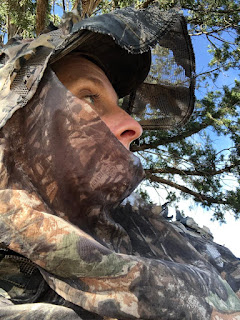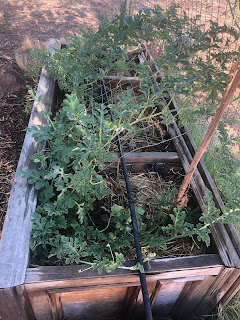Huntress by Mandi Leigh
Huntress. That word appears frequently in fantasy novels and
science fiction movies. When you say it out loud, it brings visions of a fierce,
slender, attractive woman, with chunky metal bands on her wrist and head. Her
hair is long and flowing, and she is holding a bejeweled sword or a fairytale-like
bow and quiver. The word huntress does
not conjure images of an ordinary woman from a regular slice of life trying to
provide for her family. In the simple essence of the definition, that is
exactly what a huntress is: a woman who hunts.
And I am a woman who hunts for elk.
I started out as a young girl who would hunt for, but never
kill, small lizards and bugs in my backyard. I loved finding and stalking small
creatures and observing their world. As a pre-teen, my dad noticed my interest
in the outdoors. He took me dove hunting, and we proudly ate our limit. I
became infatuated with the idea of providing food for myself. As a young woman, I would put in for elk with
friends. Mostly unsuccessful, I still became obsessed with the patterns and rhythms
of the large wild animal. And when I
became a mother, I was determined to feed my children lean, free-range meat
from the wild. With each elk hunt, my mind fixated on a freezer full of healthy
meals that would provide nourishment for my children.
How could you kill a beautiful elk? I’ve been asked this question more than once.
Each time, I respond with strong conviction. I am woman with a heart full of
admiration and respect for all wildlife, especially elk. My scope does not aimlessly
wander through nature with a blatant disregard for wildlife. When my hiking
boots lightly press on the blades of grass filled with the early morning dew, and
all that is heard is the breath inside of my head net, I feel oneness with
nature. In that moment, I am a part of the ecological cycle, in search of food
for survival. The desire to find the elk
is fierce. Miles upon miles are walked with my mind sharply focused. A game of wits
runs through my head as I study the land, recording and tracking the evidence with
every step. When the hard work pays off, and I am fortunate enough to stand face-to-face
with a legal elk, my aim is for the kill to happen quickly and humanely without
longsuffering. The elk’s life will never
be wasted. Instead, the elk is revered for the beauty it has contributed to its
natural habitat; the same habitat that I studied so diligently to become one
with. My family will rejoice with gratitude each time we eat the delicious
free-range meat that I, the plain and ordinary huntress, bagged in the wild.
ELK RECIPES
Enchilada-Style Elk Cube Steak
4 to 6 tenderized elk cube steaks (about 2 pounds total)
1 6-ounce can tomato paste
2 teaspoons garlic salt
1 teaspoon cumin powder
½ teaspoon chili powder
½ teaspoon paprika
3 tablespoons ketchup
1 cup water
1 cup shredded cheddar cheese (optional)
4 to 6 tablespoons of sour cream (optional)
In a large bowl, whisk together tomato paste, garlic salt, cumin powder, chili powder, paprika, ketchup and water to form the sauce. Place steaks on a large sheet pan. Evenly pour the sauce over each of the steaks. Bake at 350° for 35 minutes. If cheese is desired, carefully take out the pan, and sprinkle cheese over the top of the steaks. Bake for another 5 minutes. Top with a tablespoon of sour cream. This dish is great with black beans, Spanish rice or green chili and squash stir fry.

Tri-Tip Rub Elk Roast
2 pounds elk roast
1 tablespoon garlic salt
1 teaspoon fresh cracked black pepper
1 teaspoon paprika
1 tablespoon brown sugar
Mix all dry ingredients on a plate. Roll roast in the dry rub mixture to provide
an even coating. Place roast in a roasting pan with 1 cup of water in the
bottom of the pan. Cover the roast with foil or roasting pan lid, and bake at
325 for 2 hours. Alternatively, place 1 cup of water and roast in an electronic
multi-cooker pot set for 2 hours on the pressure cook setting. Cut roast in ¼
to ½ inch slices. Serve roast with baked potato, pinto beans, and crisp salad.




Comments
Post a Comment